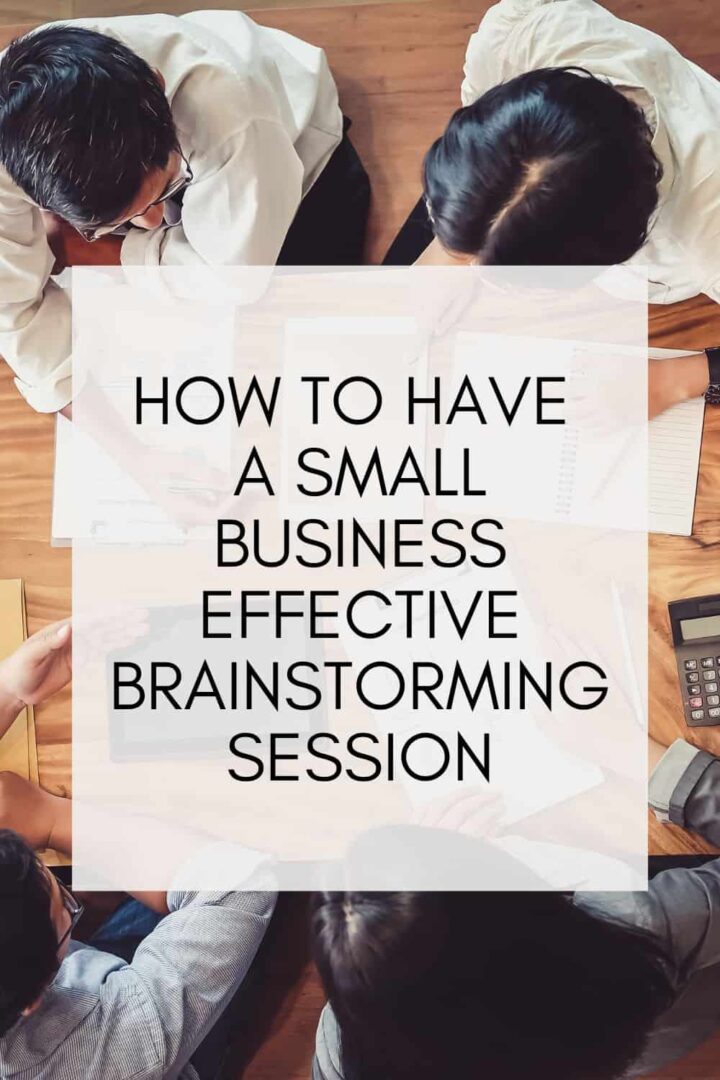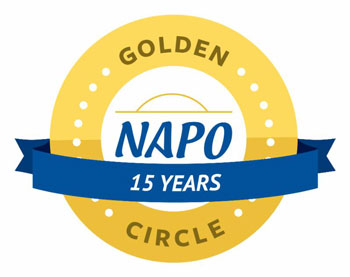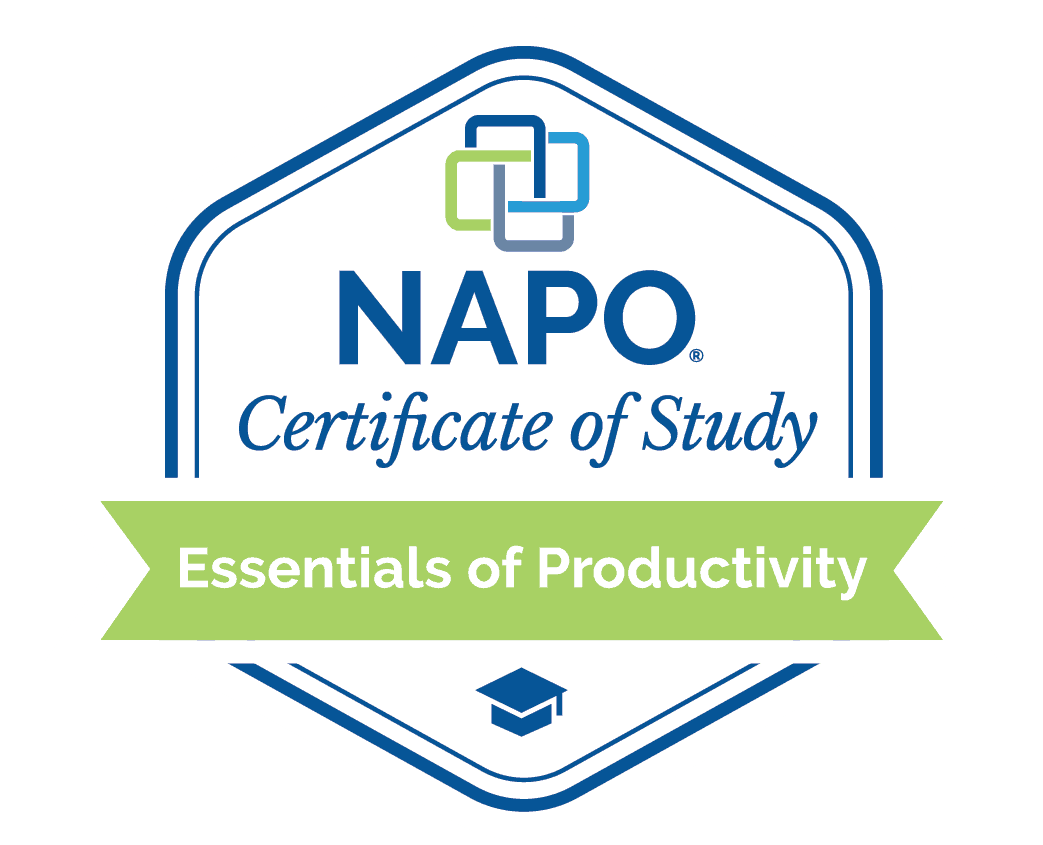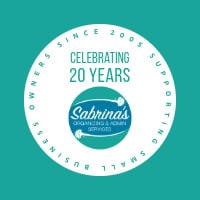Small business owners want their businesses to grow and generate new ideas to make them more streamlined and profitable. Who better to communicate with to determine these ideas than colleagues (affiliate) and employees/staff? My recent post discussed several effective small business meeting tips, in which I briefly discussed brainstorming sessions. Today, I will dig a little deeper into brainstorming sessions and share some tips to make a small business effective brainstorming session. Follow along and let’s get new ideas!
Topics Discussed in this post
Why should I do brainstorming sessions?
It helps open our minds to new ideas and allows us to try something new. It also helps get out of the victim’s view and feel more empowered to make change happen.
Below are three brainstorming session types you can use to help motivate your team to generate new ideas and implement change.
Brainstorming for Questions
This type of brainstorming session is described in the Harvard Business Review as “Brainstorming for questions rather than answers makes it easier to push past cognitive biases and venture into uncharted territory.” This type of session is for a few attendees. It is basically the process of creating new questions about a business with other colleagues (affiliate) and staff to see what comes about. Answers are not needed. It will distract the people from creating new questions. Doing it this way allows participants to be more creative in thinking and gives them a sense of control when they’re looking for breakthroughs.
Combine, Refine, and Improve
The next group brainstorming method is excellent for online purposes and works for up to 12 attendees. First, give attendees 10 minutes to digitally write one idea for your predetermined topic on each virtual sticky note on Canva Whiteboard (a free app). Then, move the sticky notes (affiliate) around to group them by similar goal topics. Some topics could be marketing, website design, sales, reducing process issues, etc.
Now, as a group, revisit each group and topic and decide if they are similar or different. Also, consider whether the topic can be included as a subtopic from another sticky note.
Vote on the goal topics and determine what is a priority. Then, determine if the goal topic is feasible for the company. Can you afford it? Do you have the resources to do it? Is it achievable? Then, you remove the goal topics that can not be accomplished.
Now, you are at the ones everyone has agreed are attainable for the company and the team. Then, in your subsequent sessions, you can determine action steps for that particular goal.
I hope these different brainstorming ideas inspire you to have in-person, alone, and online sessions. Below are tips and additional ideas for an effective brainstorming session.
MindMapping
The next type of brainstorming session can be in a group, with a few people, or individual solopreneurs. You can also create a mindmap on a piece of paper or markerboard (affiliate) in your office.
The basic layout is to create a goal topic in the center. Make it specific. Then, draw lines from the center circle topic and determine the tasks that must be completed to complete that goal. The tasks should be as accurate and straightforward as possible. Some tasks could even take 15 minutes to complete, while others may have additional steps branching off from the top-level task.
You can also have larger task topics that have smaller tasks below it.
Some mindmap apps online are:
Brainwriting Ideas
Another brainstorming session is brainwriting, which is a little different. Brainwriting helps you generate ideas, and it is an alternative method to brainstorming. This works well for smaller meetings of up to 10 people. Too large of a group will result in much time spent reviewing the results and solutions.
Quietly, each person writes down their idea in response to the issue or question. Then, when done, each person passes their paper to the next person, who reviews the ideas and adds to them. This step continues until everyone has added their ideas to all the attendees’ papers. Then, the team shares their ideas on the whiteboard. There is no conversation until all the team members have jotted down their ideas. Then, it is time to discuss the group’s responses. This results in faster, more effective idea generation. And less social anxiety and competing personalities; it also yields more diverse and creative ideas and avoids falling into group-think consensus.
This can be done online or in person. If you want to do this online, you can use Lucidspark app (I am not an affiliate).
In-person tools you may use for brainstorming
If your group often meets in person, an in-person session may work for you. Below are some tools that help to have a successful brainstorming session.
- A marker board or chalkboard and markers/chalk
- Various colors of sticky notes (affiliate) and Sharpie marker
- A timer to keep on time with each step
Pitfall: The problem with face-to-face brainstorming sessions could include groupthink, which occurs when people agree on ideas to avoid conflict and struggle with people who dominate the direction of the brainstorming session. If you find that people dominate conversations in a group, it may be better to do a virtual brainstorming session.
What apps can I use for a team virtual brainstorming session?
Since we are not always in person or prefer to have sessions online, some apps will help with Zoom call brainstorming sessions. Below are some apps you can use.
Note: I am not affiliated with any of these apps.
Tips to run an Effective Brainstorming Session
Specific brainstorming types are helpful; you can quickly try them and others to see what works best for your group. However, there are additional tips you can use to make the brainstorming sessions effective.
- Determine your purpose or issue. Not having a clear purpose will not produce what you want.
- At the start of the meeting, discuss the issues the team has experienced in a brainstorming session and the solutions that did not work. This will give them a starting point and tell them what not to revisit.
- At least a few days before the meeting, give them a heads-up about the brainstorming session and what they need to consider.
- Invite new people for a fresh look for new ideas.
- It should always be an inclusive environment. All people need to feel heard.
- Create next steps—Before the end of the brainstorming session, you will need to determine the next steps, even if just to schedule the next meeting to discuss them further. Assigning different tasks to each staff member also helps set up the agenda for the next meeting.
I hope these options and tips help your small business have an effective brainstorming session and take your business to the next level.
Need help? I can help you set up your ideas and be your attendee for your small business brainstorming session! Check out my Virtual Consulting services for more information!
Related Posts:







Knowing different types of brainstorming techniques is important so you can match the best style to the topic and the group of people (personalities) to get the best results. Currently, with my group, we are using a “blue sky” technique. A volunteer talks about a client, situation or business concern they would like ideas on how to handle. After their explanation, they sit and listen and do not comment at all on the offered solutions. All solutions are accepted. After everyone has had a chance to comment then the presenter selects 2 or 3 solutions that might work. It has been very successful because the ideas are not evaluated simply presented for consideration. It reduces the fear of making a suggestion to the group.
Thanks for joining in the conversation, Julie. It is much appreciated.
I love mind mapping when I brainstorm. The visual aspect works for me.
I love the idea of collaborative brainstorming but have often found it troublesome for the reasons you mentioned; group pressure silences introverted outliers and can create unease if there’s disagreement. Posing it as coming up with questions instead of answers is fascinating.
Even better, the idea of brainwriting really resonates with me. I’m not great at brainstorming from in a vacuum. I can usually come up with a few good ideas on my own, but where I really excel is taking someone else’s thought or idea and expanding upon it or letting it spark new ideas.
Thanks for the new perspective on business brainstorming!
Thanks for stopping by and commenting, Julie! I really appreciate it.
Great ideas here, Sabrina. I love the thought of getting together with a group of like-minded peers and brainstorming. A different perspective can be truly helpful.
Thanks, Diane! I do too. It is so inspiring.
You shared excellent methods for brainstorming. Like Seana, I never heard of brainwriting and love that idea. It takes some pressure off for those who aren’t verbal processors and prefer to think with a pen and paper.
Thanks, Linda. I appreciate you for stopping by and commenting.
As a Sensing type rather than Intuitive (under the MBTI system), brainstorming doesn’t come naturally to me, but I’ve learned to accept that it’s not always about finding THE answer, but about coming up with possibilities. Your post is very helpful!
Thanks for commenting, Janet.
Wow, you have a lot of ideas here. I love that you are spelling out which tends to work out best for certain size groups. I’ve never heard of brainwriting, but it reminds me of the storytelling game we used to play as kids. One person writes a line of the story, then passes it on to someone who builds on it. What I love about this idea is that it forces people to think positively and creatively about an idea that may be totally different from one they would ever have thought of.
Back in my marketing days we would all hang out in the conference room and put ideas on large sheets of white paper that we would hang around the room. We called them “ideation sessions.” One rule was “no bad ideas.” We weren’t allowed to tear down any ideas for the first hour of the session. That came later. Knowing you could toss anything out without ridicule set the tone for a very creative session.!
I’m glad you enjoyed the post, Seana. It was fun to research the different ways to brainstorm for different size small businesses. Thanks for sharing your experience with your brainstorming sessions and commenting.